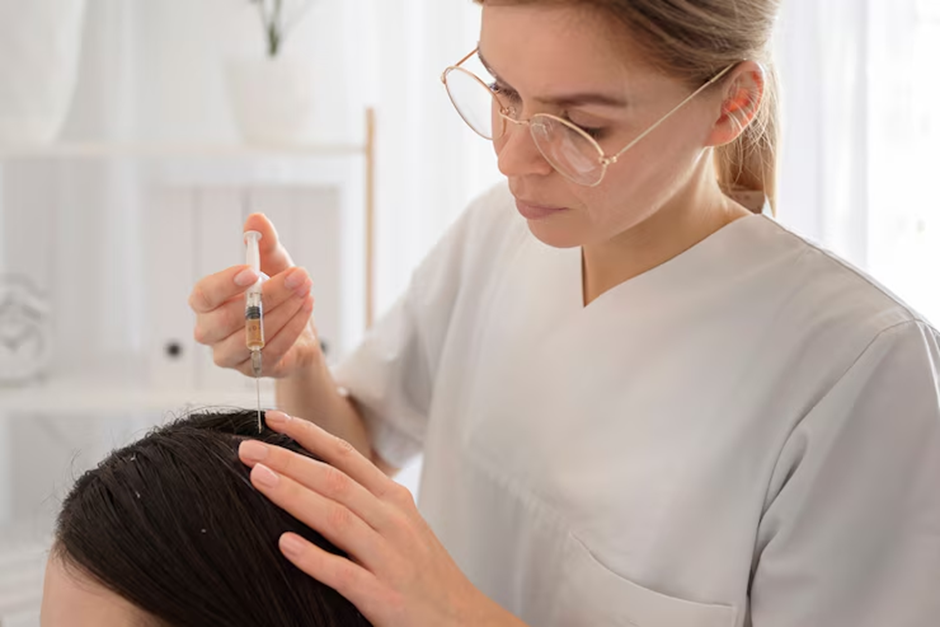Hair loss affects millions of people worldwide, but advancements in regenerative medicine are now offering new hope. One such innovation is exosomes hair treatment, a non-surgical approach that targets thinning hair by supporting follicle health and promoting regrowth. Whether used alone or in conjunction with procedures like FUE hair transplant in Melbourne, exosomes are gaining attention for their potential to improve hair density, scalp health, and overall hair quality.
If you’re considering hair restoration, it’s worth understanding what exosomes are, how they work, and what benefits they may offer for long-term hair regrowth.
Understanding Exosomes and Their Role in Hair Regrowth
What Are Exosomes?
Exosomes are microscopic vesicles released by stem cells. They play a key role in cell-to-cell communication by delivering growth factors, proteins, and genetic materials to surrounding tissues. Unlike stem cells themselves, exosomes do not contain live cells, but they still carry regenerative signals that stimulate healing and cellular repair.
In hair restoration, exosomes are isolated and purified from donor cells, then injected into the scalp where hair thinning is occurring. They work to repair damaged hair follicles, reduce inflammation, and stimulate the natural growth cycle.
How Exosomes Differ from Other Treatments
Unlike traditional topical or oral hair loss treatments, exosomes target the root cause of follicular decline. They act at the cellular level to:
- Wake up dormant follicles
- Improve blood flow to the scalp
- Extend the growth phase of the hair cycle
- Reduce scalp inflammation and oxidative stress
Compared to platelet-rich plasma (PRP), another popular regenerative therapy, exosomes contain a higher concentration of growth factors and do not require blood collection from the patient. This makes the treatment quicker and often less invasive.
Combining Exosomes with FUE Hair Transplant in Melbourn

What Is FUE Hair Transplant?
FUE (Follicular Unit Extraction) is a popular surgical procedure that involves removing individual hair follicles from the donor area (usually the back of the scalp) and implanting them into thinning or balding regions.
FUE hair transplant in Melbourne is a widely available option for patients seeking a permanent solution to hair loss. The procedure is favoured for its minimal scarring and shorter recovery time compared to older strip methods (FUT).
Why Combine FUE with Exosome Therapy?
Exosome injections are increasingly being used as a supplementary treatment before or after FUE procedures. When used together, the benefits may include:
- Faster recovery after transplant surgery
- Reduced post-surgical inflammation
- Improved survival rate of transplanted follicles
- Enhanced natural hair growth in surrounding areas
For patients undergoing FUE hair transplant in Melbourne, clinics may offer exosome therapy to boost the effectiveness of the transplant and support long-term scalp health.
What to Expect from an Exosome Hair Treatment Session
Consultation and Assessment

Your treatment journey typically begins with a consultation at a hair clinic. The practitioner will assess the extent of your hair loss, your medical history, and your goals for treatment. If you’re also considering a hair transplant, they will determine if exosomes are suitable as a combined therapy.
The Procedure
- Scalp cleansing: The treatment area is cleaned thoroughly.
- Numbing agent: A local anaesthetic may be applied to reduce discomfort.
- Injection of exosomes: Using fine needles, exosomes are injected directly into the scalp, focusing on areas of thinning.
The session usually lasts 30–60 minutes, with no need for downtime. Most patients return to normal activities the same day.
Aftercare and Results
There may be mild redness or tenderness at the injection sites, but these effects typically resolve within a day or two. Since exosomes work on a cellular level, results may become visible gradually over several weeks to months.
Patients often report:
- Improved hair texture and strength
- Increased thickness in thinning areas
- Reduced hair shedding
For optimal results, some clinics recommend a series of sessions spaced weeks apart.
Who Is a Good Candidate for Exosomes Hair Treatment?
Suitable Candidates
Exosomes may be ideal for people who:
- Are in early to moderate stages of hair thinning
- Have androgenic alopecia (male or female pattern baldness)
- Want a non-surgical option to restore hair density
- Are looking to enhance the effects of FUE transplant
- Are experiencing hair shedding after illness or stress
Who May Not Be Suitable
Patients with severe baldness, inactive follicles, or underlying medical conditions affecting hair growth may need other forms of intervention. A full scalp assessment by a professional is necessary to determine if exosomes are the right fit for your needs.
Choosing the Right Clinic in Melbourne
When considering FUE hair transplant in Melbourne or exosomes hair treatment, look for clinics with:
- Trained practitioners in regenerative therapies
- Transparent pricing and treatment plans
- Experience with combining transplant and exosome techniques
- Clean and accredited facilities
Reviews and before-and-after photos from past patients can also provide insights into the clinic’s effectiveness and professionalism.
Conclusion
Exosomes hair treatment represents a promising development in non-surgical hair restoration. By delivering targeted growth factors directly to the scalp, exosomes can stimulate natural regrowth and rejuvenate weakened follicles.
Whether used on their own or as a follow-up to FUE hair transplant in Melbourne, exosomes offer a safe, science-backed solution for those dealing with hair thinning. With minimal downtime and a growing record of positive outcomes, this treatment may be an excellent option for anyone looking to restore not just their hair, but also their confidence.






